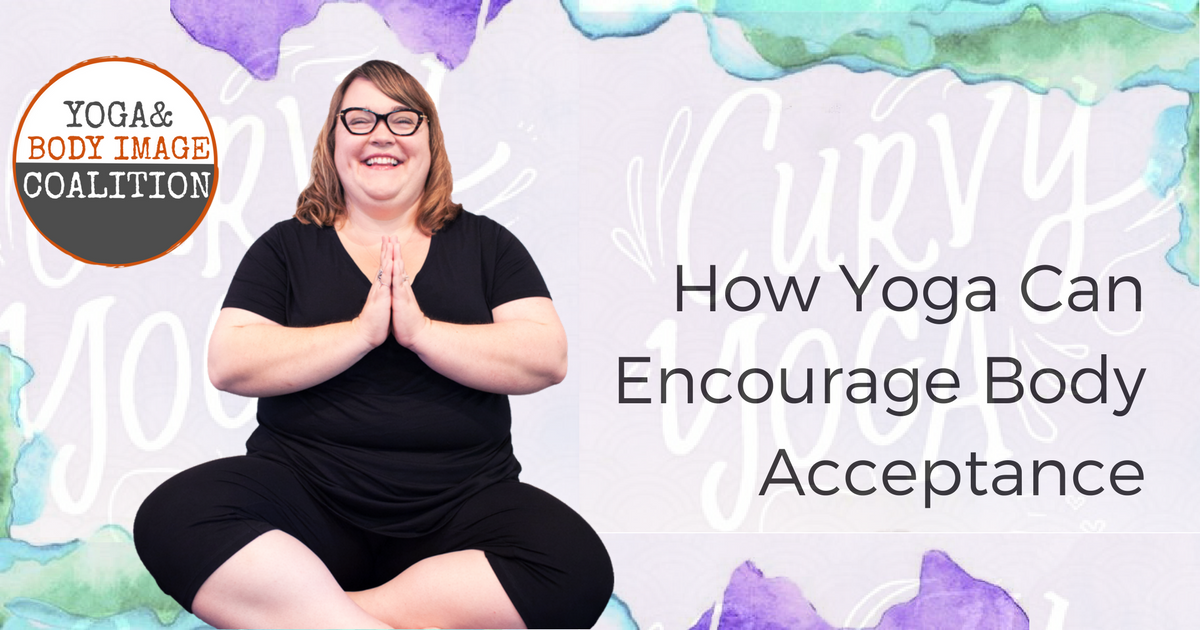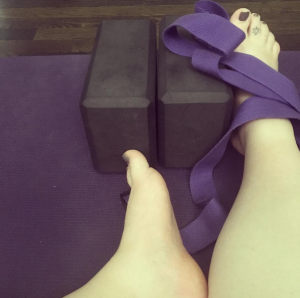How Yoga Can Encourage Body Acceptance
January 12, 2017
When I first started practicing yoga, I would hear teachers say things like, “Notice what’s happening in your big toe,” or “How deeply are you breathing right now?,” and I’d just laugh inside and move along.
I thought this was just more yoga teacher-speak, the stuff of metaphors.
 Many people are disconnected from their bodies for various reasons, and many of those people find their way to yoga. I was certainly one of those people. I was so disconnected from my body, in fact, that I had no way of knowing that what those teachers were asking was concretely possible for some people. That’s why I dismissed it out of hand.
Many people are disconnected from their bodies for various reasons, and many of those people find their way to yoga. I was certainly one of those people. I was so disconnected from my body, in fact, that I had no way of knowing that what those teachers were asking was concretely possible for some people. That’s why I dismissed it out of hand.
While I think questions such as the ones posed by my teachers are an essential part of people coming back to their bodies through yoga, I think teachers can do more to frame the experience and help students find their way in more readily.
One of the things that has come out of my years of practice and teaching is something I call Curvy Yoga Practice. It’s a four-part, body-affirming process, that can help people connect with and affirm their body, both on and off the yoga mat.
The process isn’t step-by-step; it’s organic. One component is presence: inviting yourself or students to notice something simple about their body — for example, where their foot is touching the floor. This instruction can start with asking people to look with at their foot in contact with the floor, then see if/what they can feel. Providing space for experimentation and for people not to feel anything is important so that everyone is able to participate in a way that makes sense for them.
The next component is getting curious, which is where questions such as the ones my teacher asked come in. Again, making this concrete can be very helpful. So instead of simply asking students to notice their breath, you can offer them something specific — to feel the air coming in/out of their nostrils or to place one hand on their heart and one hand on their belly and see if they notice any movement as they breathe. Another way I love to offer questions in class is with if/then cues — “If your belly feels compressed, then try this.” This asks every student to check in, see if the cue is relevant, and then take it or leave it depending on what they find.
The next component is to challenge any negative thoughts that may arise during the inquiry  process. Many of us have a version of an inner critic, and that voice is certainly not guaranteed to leave during yoga. In fact, for many people, yoga might be a time that it kicks back up in full force, criticizing what their body is or isn’t able to do, how it does or doesn’t look, how it compares to what someone else can do, etc. Offering yourself or students an opportunity to notice their inner dialogue and shift it can be powerful. One simple way to shift it is to bring yourself back to presence, as described above.
process. Many of us have a version of an inner critic, and that voice is certainly not guaranteed to leave during yoga. In fact, for many people, yoga might be a time that it kicks back up in full force, criticizing what their body is or isn’t able to do, how it does or doesn’t look, how it compares to what someone else can do, etc. Offering yourself or students an opportunity to notice their inner dialogue and shift it can be powerful. One simple way to shift it is to bring yourself back to presence, as described above.

The final component is to affirm your body. Far too often, I think that body acceptance gets lumped into the realm of “sounds good for other people, but I’ll never be able to do it.” Or, people get interested, have a negative thought about their body, assume they’ve failed, and get further confirmation that it was never for them in the first place. The other thing that happens is people get the idea that accepting your body means running through fields of rainbows and puppies 24/7, and if you don’t feel that, then you obviously don’t have a positive relationship with your body. What I’ve seen in my own life, though, as well as the lives of many people, is that body acceptance is actually far quieter than that. I think of it like any long-term relationship: the times where you feel effusive love are usually few and far between, particularly after some time has passed. What you feel instead is that…
Body acceptance is a comfort, companionship, and everyday-type love that lets you feel seen and supported as you move through your life. It’s not flashy, but it doesn’t need to be; instead, it’s rooted.
Curvy Yoga Practice starts on the yoga mat because it can provide people a clear container for getting started –for example, a way to notice specifically what is happening in a particular pose. But the process can also travel with people off their yoga mat and into their everyday lives. Of course, much of this is what long-time practitioners discover about the practice over time, but offering people a structure doesn’t limit the experience. Instead, it helps more people feel inside it and lets them find what the practice means for them. The components simply provide a foothold; once people get their footing, they integrate it into their practice and life and make it their own.
To learn more about Curvy Yoga Practice, as well as pose options for curvy bodies, you might like to check out my new book, Curvy Yoga: Love Yourself & Your Body a Little More Each Day.

Anna Guest-Jelley is the founder of Curvy Yoga, an online yoga studio and teacher training center that helps people of all sizes find true acceptance and freedom, both on and off the mat. Anna is the author of Curvy Yoga: Love Yourself & Your Body a Little More Each Day and the co-editor of Yoga and Body Image: 25 Personal Stories About Beauty, Bravery & Loving Your Body. To learn more about Curvy Yoga, visit www.CurvyYoga.com
